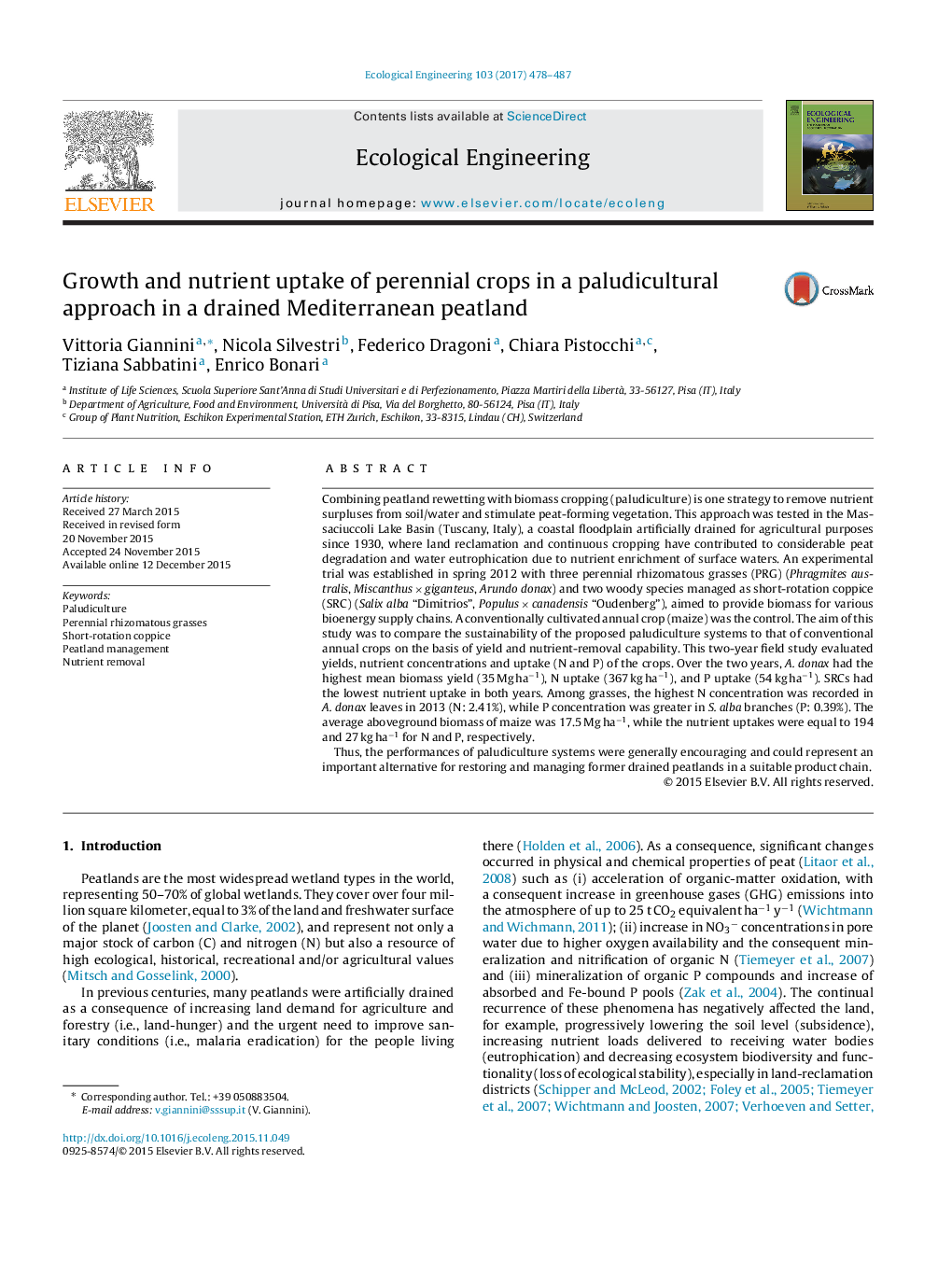| کد مقاله | کد نشریه | سال انتشار | مقاله انگلیسی | نسخه تمام متن |
|---|---|---|---|---|
| 5743902 | 1412323 | 2017 | 10 صفحه PDF | دانلود رایگان |
- Three perennial grasses and two woody crops were tested for paludiculture.
- All species tested were suitable for paludiculture.
- Arundo donax had the highest yields and nutrient (N, P) uptakes.
- The paludicultural system could be a promising option for peatland management.
Combining peatland rewetting with biomass cropping (paludiculture) is one strategy to remove nutrient surpluses from soil/water and stimulate peat-forming vegetation. This approach was tested in the Massaciuccoli Lake Basin (Tuscany, Italy), a coastal floodplain artificially drained for agricultural purposes since 1930, where land reclamation and continuous cropping have contributed to considerable peat degradation and water eutrophication due to nutrient enrichment of surface waters. An experimental trial was established in spring 2012 with three perennial rhizomatous grasses (PRG) (Phragmites australis, Miscanthus Ã giganteus, Arundo donax) and two woody species managed as short-rotation coppice (SRC) (Salix alba “Dimitrios”, Populus Ã canadensis “Oudenberg”), aimed to provide biomass for various bioenergy supply chains. A conventionally cultivated annual crop (maize) was the control. The aim of this study was to compare the sustainability of the proposed paludiculture systems to that of conventional annual crops on the basis of yield and nutrient-removal capability. This two-year field study evaluated yields, nutrient concentrations and uptake (N and P) of the crops. Over the two years, A. donax had the highest mean biomass yield (35 Mg haâ1), N uptake (367 kg haâ1), and P uptake (54 kg haâ1). SRCs had the lowest nutrient uptake in both years. Among grasses, the highest N concentration was recorded in A. donax leaves in 2013 (N: 2.41%), while P concentration was greater in S. alba branches (P: 0.39%). The average aboveground biomass of maize was 17.5 Mg haâ1, while the nutrient uptakes were equal to 194 and 27 kg haâ1 for N and P, respectively.Thus, the performances of paludiculture systems were generally encouraging and could represent an important alternative for restoring and managing former drained peatlands in a suitable product chain.
Journal: Ecological Engineering - Volume 103, Part B, June 2017, Pages 478-487
